Transport timetable awakens great expectations
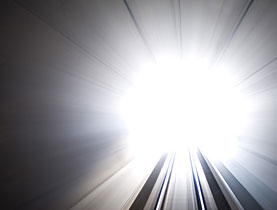
Many people in Switzerland this weekend were looking forward to an event that may alter the way they use Swiss public transport – the start of a new annual timetable.
While travellers outside the country might shake their heads in disbelief at the impact of a timetable, there is a fascination for the Swiss as to what exactly is going to change in their lives.
The opening of the new 34.6-kilometre Lötschberg base tunnel is unquestionably the highlight of this year’s schedule, which came into force on Sunday.
It reduces journey times considerably from many parts of the country to canton Valais, with local resorts – Zermatt is just one example – eager to cash in on the expected increase in visitors.
The Lötschberg is part of a major project – New Rail Links through the Alps (NRLA) – that will eventually shift transalpine transit traffic from road to rail. The other major construction is the Gotthard base tunnel, which when completed will be the longest of its kind in the world (57 kilometres).
With the new timetable and opening of the Lötschberg tunnel to scheduled passenger traffic, the journey from the capital, Bern, to Brig in Valais will take 64 minutes instead of 96, shaving a third off travel time.
“Enormous difference”
“It’s going to make an enormous difference to Swiss people. A railway journey that is cut by 20 minutes or half an hour is dramatic, so to save an hour between Basel and northern Switzerland, and Valais and Italy is a remarkable achievement,” travel writer Anthony Lambert told swissinfo.
“I’m sure it will convince many people that they should take the train rather than driving.”
The Lötschberg tunnel has its advantages but gives the operators – the BLS Lötchberg Railway – huge challenges because there is only a single track over a 21-kilometre stretch.
“This demands high precision for train timing,” Swiss Federal Railways spokesman Roland Binz told swissinfo.
“We’ve had intensive discussions with our colleagues in Italy so that they get used to Swiss standards of timing because it’s very important that we can get trains punctually to the tunnel. The single-track stretch is like an eye of a needle.”
Contingency plans
The Lötschberg tunnel, which cost about SFr4 billion ($3.54 billion) to plan and build, has contingency plans for trains that turn up late. They will either have to wait for a new slot or go through the old tunnel.
Travel writer Lambert, who argues that Switzerland has the finest transport system in the world, feels the money for the NLRA project is being well spent.
“What I think is remarkable is the scale of investment that the Swiss have been willing to put into the two base tunnels – the Lötschberg and the Gotthard.”
“In many ways it’s anticipating the kinds of environmental challenges we’re going to face in the 21st century and keeps Switzerland well ahead of the game,” he added.
While the Lötschberg brings the most evident changes to the new timetable there are many other modifications that rail travellers will notice.

More
New Rail Links through the Alps
Faster and shorter
These include faster journey times into the Jungfrau region, half-hourly trains at peak times between Basel and Zurich, a shorter journey time between Lucerne and Bern, and additional services between Geneva and Bern.
Binz is quick to point out that Switzerland already has the densest rail network in the world.
“To use this to its optimum is a highly complex operation because it’s difficult to find slots where we can put on additional trains. The people who draw up the timetable and our operating staff [every year] face a big challenge.”
With the increasing offer, transport operators are also hoping for an increasing number of travellers. The trend in Switzerland is certainly going in that direction.
swissinfo, Robert Brookes
Length of Lötschberg base tunnel – 34.6 kilometres.
Separation between the tubes – 40 metres.
Elevation at the Frutigen north portal – 776.5m above sea level.
Elevation at the Raron south portal – 654.2m above sea level.
Length of track system – 57 km.
The Swiss are European champions when it comes to travelling by train.
More than 341,000 people have a general season ticket (valid for most public transport services). More than two million have a half-price season ticket. Both numbers are on the increase and going from record to record.
The Swiss Federal Railways alone is investing SFr500 million a year on new rolling stock to keep up with demand.
The 2008 printed version of the Swiss public transport timetable comes in three volumes, contains more than 5,000 pages and costs SFr16 ($14.16). The print run has shrunk to 100,000 copies as a result of online inquiries on the internet.
On average, the Swiss Federal Railways receives 450,000 inquiries daily on its online timetable.
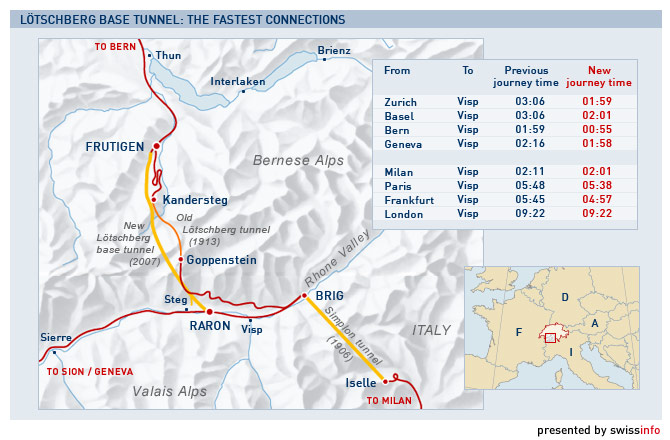

In compliance with the JTI standards
More: SWI swissinfo.ch certified by the Journalism Trust Initiative
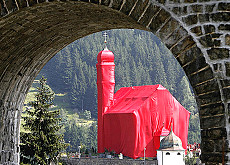
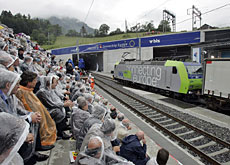
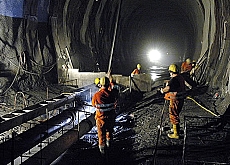
You can find an overview of ongoing debates with our journalists here. Please join us!
If you want to start a conversation about a topic raised in this article or want to report factual errors, email us at english@swissinfo.ch.